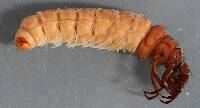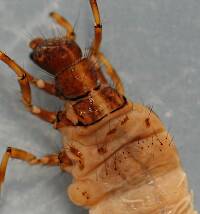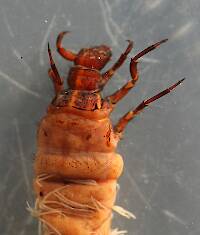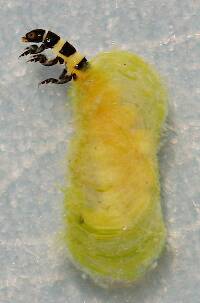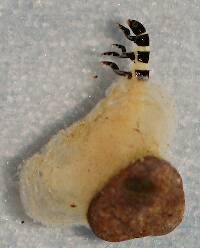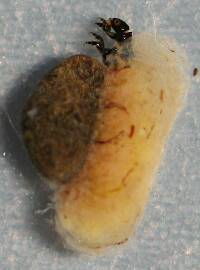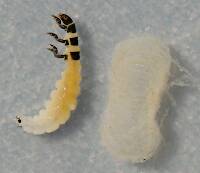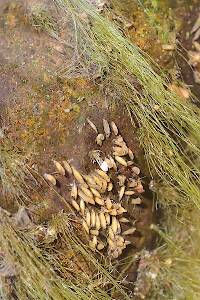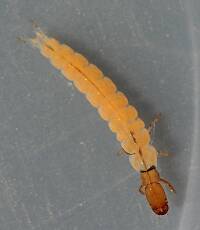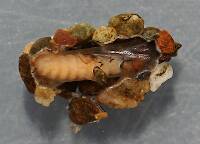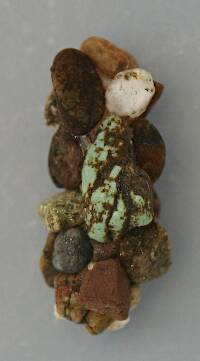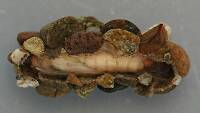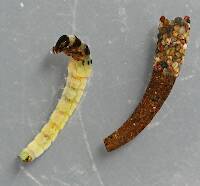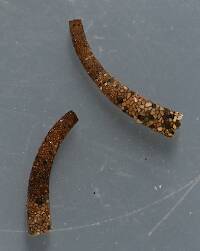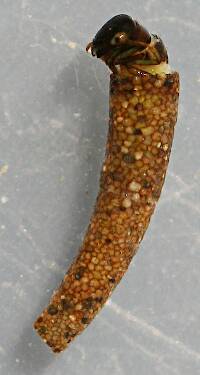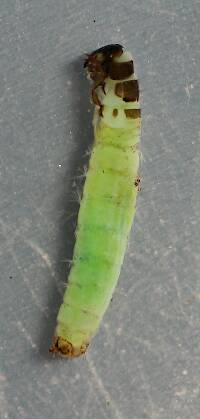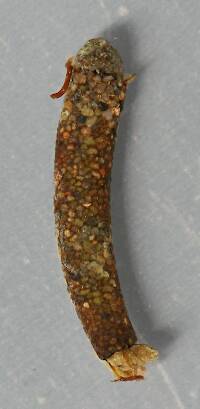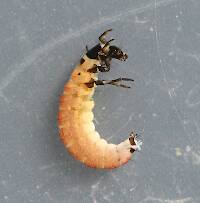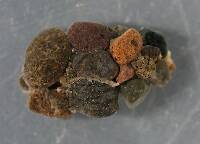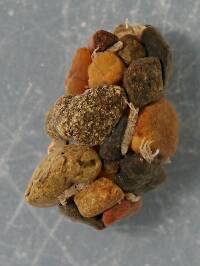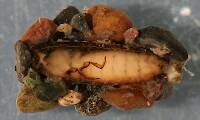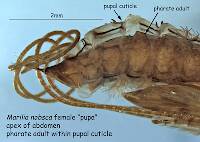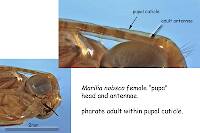
Hex Mayflies
Hexagenia limbata
The famous nocturnal Hex hatch of the Midwest (and a few other lucky locations) stirs to the surface mythically large brown trout that only touch streamers for the rest of the year.
Featured on the forum

This one seems to lead to Couplet 35 of the Key to Genera of Perlodidae Nymphs and the genus Isoperla, but I'm skeptical that's correct based on the general look. I need to get it under the microscope to review several choices in the key, and it'll probably end up a different Perlodidae.

Troutnut is a project started in 2003 by salmonid ecologist Jason "Troutnut" Neuswanger to help anglers and
fly tyers unabashedly embrace the entomological side of the sport. Learn more about Troutnut or
support the project for an enhanced experience here.
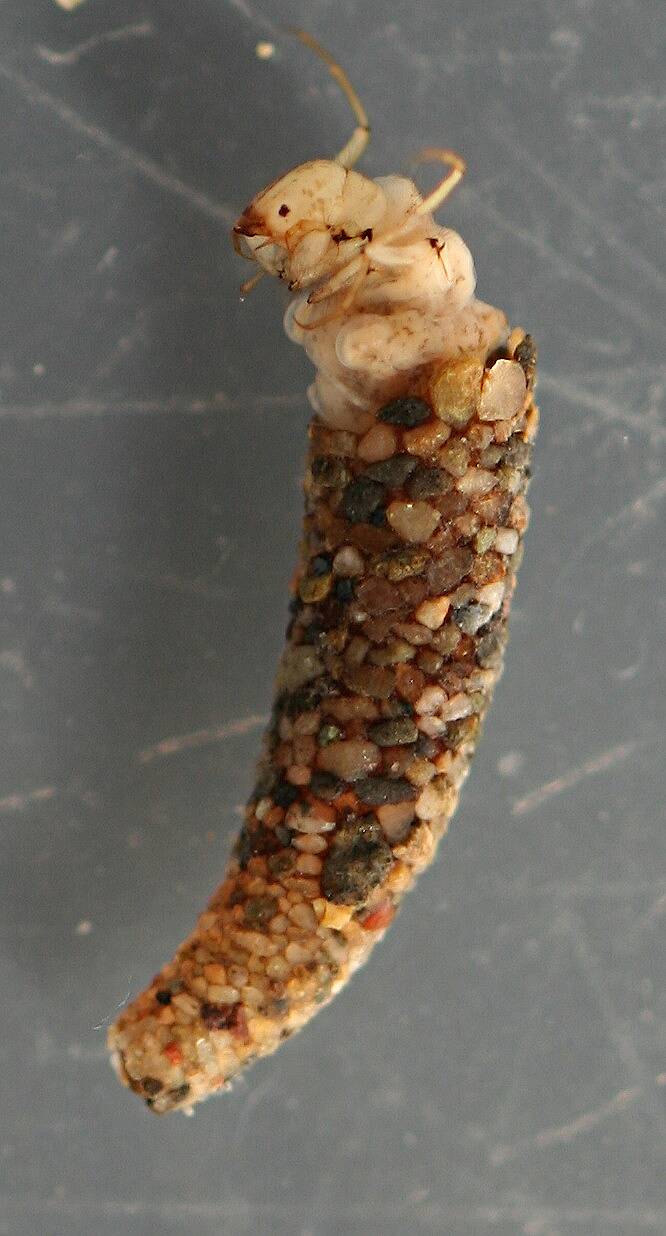
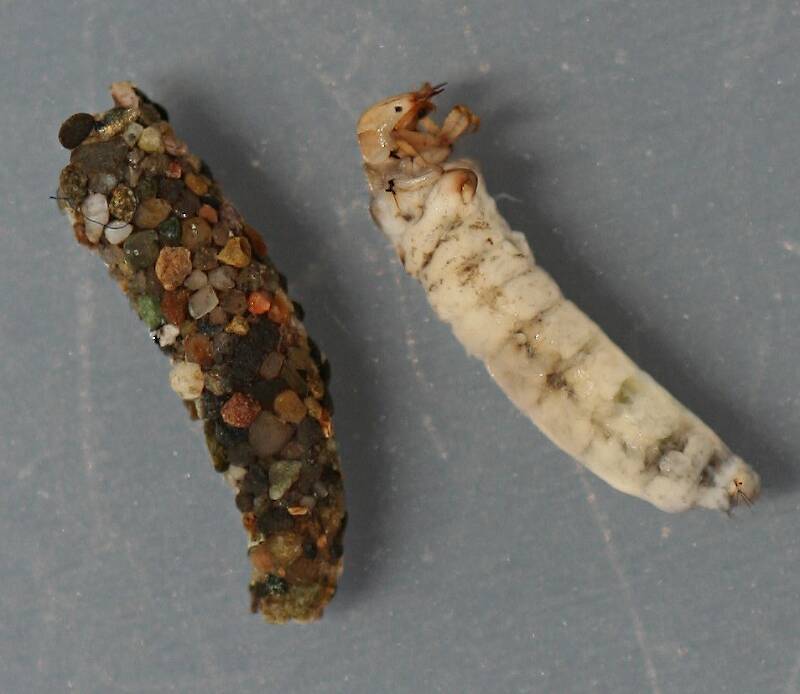
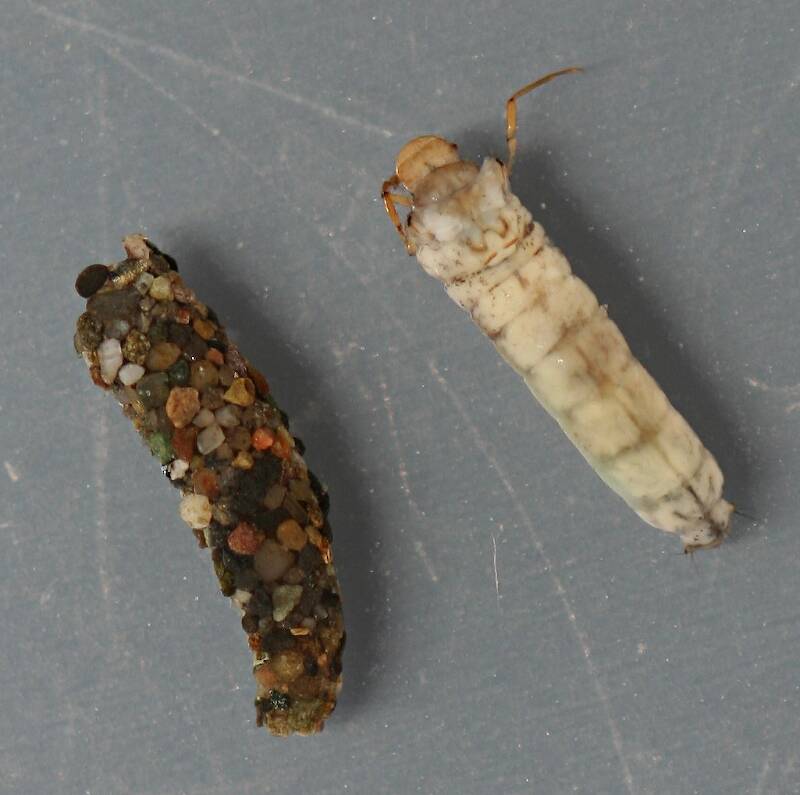
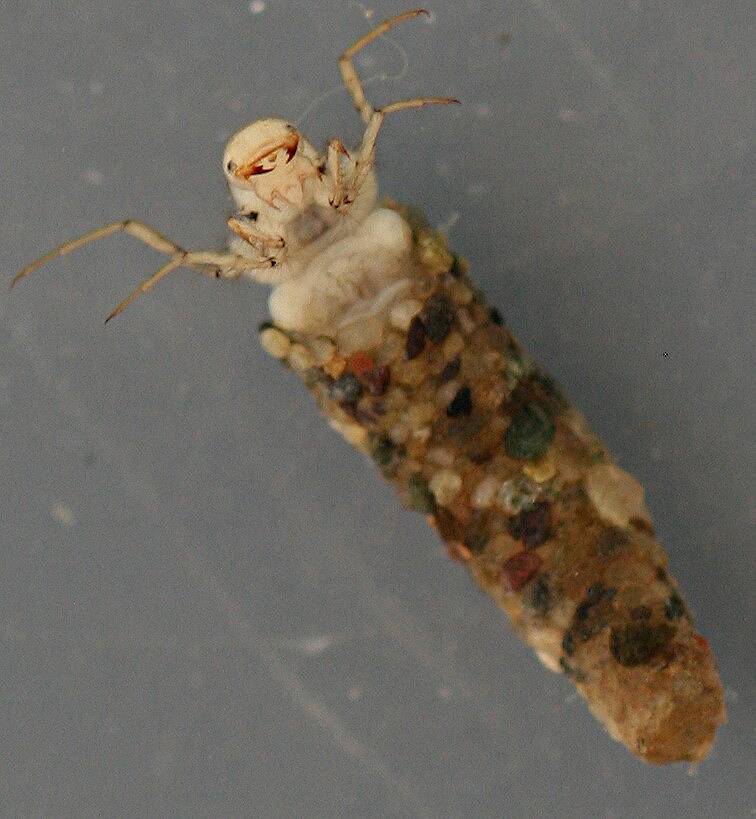

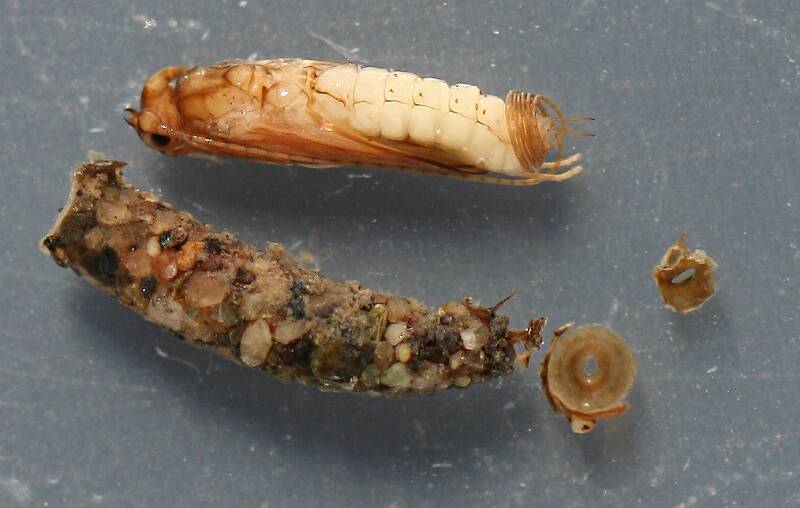
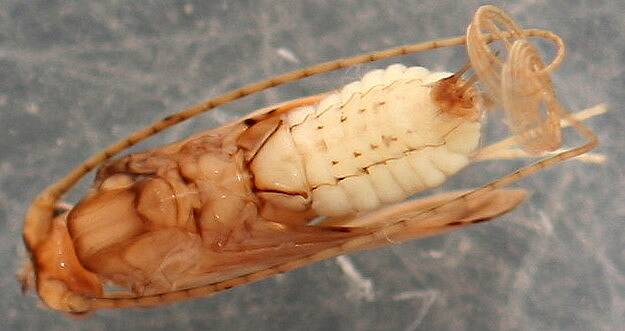
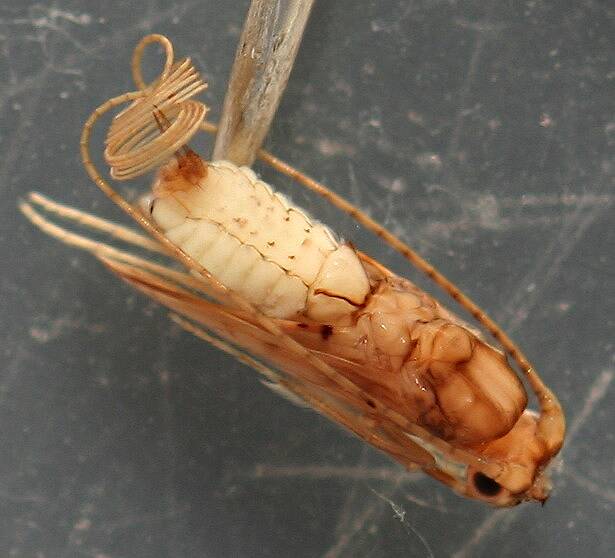
Millcreek on Jul 5, 2015July 5th, 2015, 2:35 pm EDT
All of these were found in the Russian River. The larvae were found on gravel in a moderate current and the pupae were found in a fast current attached to cobbles. The pupae are often in aggregations on the cobble and attached by the front and back of the case. The shell is sealed with plugs at both ends. The larvae was identified to genus and the pupae to family using Merritt, Cummins and Berg (2008). The length of the larvae is 7 mm for the case and 6 mm for the larvae. For the pupae it is 8 mm for the case and 7mm for the pupae. All were found between April and July.
"If we knew what it was we were doing, it would not be called research, would it?"
-Albert Einstein
-Albert Einstein
Creno on Jul 5, 2015July 5th, 2015, 4:09 pm EDT
From what I can see it looks like there are two patches of hooks on the dorsal spacing hump. If so this is one of the O. avara group. There is a nice publication on the NA larvae (Floyd, M.A. 1995. Larvae of the caddisfly genus Oecetis (Trichoptera: Leptoceridae) in North America. Bulletin of the Ohio Biological Survey, New Series 10: 1-85.) that covers status at that time. There is alot of work to do yet in NA on the O. avara group. The larval sclerites seem very pale without the typical darker muscle scars.
Millcreek on Jul 5, 2015July 5th, 2015, 6:58 pm EDT
Dave-
Wasn't quite sure what you meant by the dorsal spacing hump. Put a couple extra photos in. I hope I got the area you were interested in.
Mark
Wasn't quite sure what you meant by the dorsal spacing hump. Put a couple extra photos in. I hope I got the area you were interested in.
Mark
"If we knew what it was we were doing, it would not be called research, would it?"
-Albert Einstein
-Albert Einstein
Entoman on Jul 5, 2015July 5th, 2015, 8:45 pm EDT
Hi Mark & Dave ,
I'm not sure, either. Are you talking about hook plates, Dave? I know about humps being used by some genera for spacing in their cases. It is believed to allow for better water circulation for their respiratory systems. I didn't know lepidostomids had them. BTW, great photos as usual Mark. Those coiled antennae in the pupae photos are fascinating!
I'm not sure, either. Are you talking about hook plates, Dave? I know about humps being used by some genera for spacing in their cases. It is believed to allow for better water circulation for their respiratory systems. I didn't know lepidostomids had them. BTW, great photos as usual Mark. Those coiled antennae in the pupae photos are fascinating!
"It's not that I find fishing so important, it's just that I find all other endeavors of Man equally unimportant... And not nearly as much fun!" Robert Traver, Anatomy of a Fisherman
Millcreek on Jul 6, 2015July 6th, 2015, 4:54 am EDT
Hi Kurt-
Thanks for the kind words about the photos. Incidentally, the photos aren't of a lepidostomid they're of a leptocerid which do have dorsal humps as well as ventral and lateral ones.:)
Mark
Thanks for the kind words about the photos. Incidentally, the photos aren't of a lepidostomid they're of a leptocerid which do have dorsal humps as well as ventral and lateral ones.:)
Mark
"If we knew what it was we were doing, it would not be called research, would it?"
-Albert Einstein
-Albert Einstein
Entoman on Jul 6, 2015July 6th, 2015, 6:36 am EDT
Ah! No wonder I was confused.:) I'm sure Dave is talking about the dorsal hump.
"It's not that I find fishing so important, it's just that I find all other endeavors of Man equally unimportant... And not nearly as much fun!" Robert Traver, Anatomy of a Fisherman
Creno on Jul 6, 2015July 6th, 2015, 1:22 pm EDT
I created too much confusion. I should have said the larval dorsal hump in the third pic to make it clear what I was looking at. I guess the primary NA authors today leave "spacing" out of their figure labels and discuss the usage/purpose in the text. Sorry I will try to do better. To my knowledge caddis pupae don't have comparable structures to the larval abdominal segment 1 humps, in form or function :-)
Millcreek on Jul 6, 2015July 6th, 2015, 2:29 pm EDT
Dave-
I understand now. I hadn't heard of using hook plates in larval placement.
Just in placing pupae in family. Anyway, I took another look under the microscope and it does have the bottom two as hooked plates but the top two are another structure more closely resembling sclerites.
I understand now. I hadn't heard of using hook plates in larval placement.
Just in placing pupae in family. Anyway, I took another look under the microscope and it does have the bottom two as hooked plates but the top two are another structure more closely resembling sclerites.
"If we knew what it was we were doing, it would not be called research, would it?"
-Albert Einstein
-Albert Einstein
Creno on Jul 6, 2015July 6th, 2015, 10:00 pm EDT
I don't think they are really hook plates in the context of caddis pupae. The musculature would be completely different. But none the less they work to separate the O.avara group. There are lots of various setal patches on caddis larvae that have taxonomic use.
Millcreek on Jul 7, 2015July 7th, 2015, 7:41 am EDT
Dave-
Added some photos of mature Agapetus pupae. Thought you might like to know.
http://www.troutnut.com/topic/8638/Agapetus-larva-and-pupa
Added some photos of mature Agapetus pupae. Thought you might like to know.
http://www.troutnut.com/topic/8638/Agapetus-larva-and-pupa
"If we knew what it was we were doing, it would not be called research, would it?"
-Albert Einstein
-Albert Einstein
Quick Reply
Related Discussions
Topic
Replies
Last Reply
14
Apr 18, 2011
by Troutnut
by Troutnut
Re: Help obtaining photos of larval insects for a City of Denton, TX photographic key to ID'ing.
In the Identify This! Board by Rdjudy
In the Identify This! Board by Rdjudy
1
Jul 28, 2008
by Taxon
by Taxon
8
Aug 25, 2014
by Millcreek
by Millcreek
4
Oct 29, 2014
by Millcreek
by Millcreek



